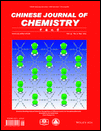Synthesis of Hydroxyapatite Nanorods under Mild Conditions and Their Drug Release Properties
Abstract
Hydroxyapatite (HAp) nanorods possess vast potential applications in various fields, and here HAp nanorods with high aspect ratio were synthesized via a convenient two-stage precipitation-hydrolysis process at 60°C under atmospheric pressure. The precursor of CaHPO4 at precipitation stage is well crystallized as nubby morphology with CTAB as surfactant, while CaHPO4 was dissolved and CTA+ stabilized the HAp nuclei during the hydrolysis stage. OH− ions were absorbed onto the active crystal surface, where Ca2+ and PO43+ reacted with OH− to make the nuclei grow into larger crystals, and highly crystalline HAp nanorods were obtained by Ostwald ripening. The loaded drug of IBU on the HAp crystals can be 100% released in 24 h. PVP modified HAp nanorods can increase the drug-loading capacity and release drug faster than pure HAp nanorods. The results indicate that HAp nanorods modified with suitable surfactants are of great use in drug delivery system.




